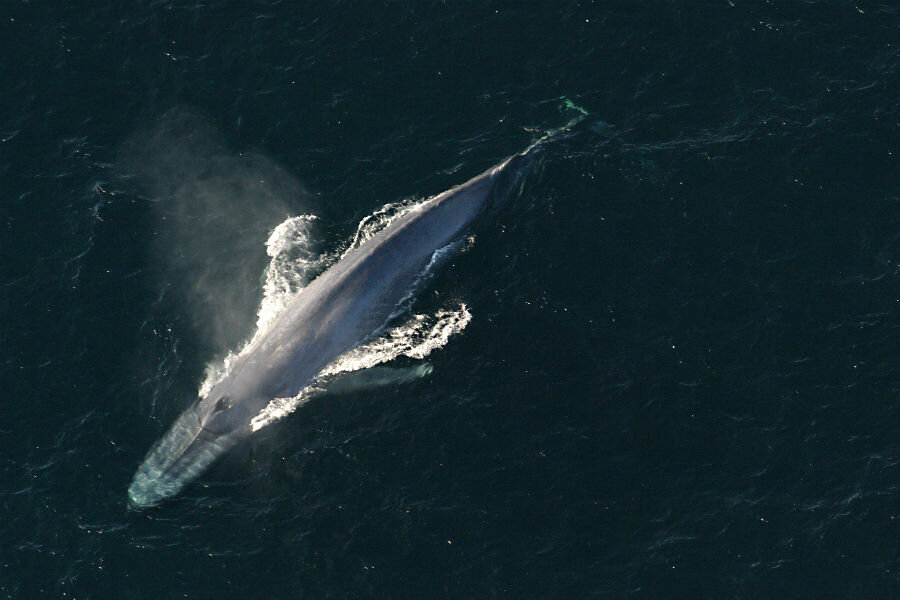As species vanish, so do their droppings. This could be a bad thing.
Loading...
Who knew poop could be such an essential component to the our planet's ecology?
A new study discovered that the colossal quantities of feces deposited by whales, mammoths, and other giant animals that once roamed the earth, seas, and skies played a huge role in transporting nutrients around the globe.
Published Monday in the Proceedings of the National Academy of Sciences, the findings put forth by an international team of nine scientists show that as these giants they ate, excreted, and eventually died in constant motion, the nutrients in their excrement and decaying bodies moved from the depths of oceans and rivers to land surfaces, and even mountaintops.
According to co-author and biologist Joe Roman of the University of Vermont, there was a time when the world had twice the population of seabirds, 10 times more giant herbivores such as sloths and mastodons, 10 times more whales, and 20 times more anadromous fish, that is, fish, such as salmon, that are born in freshwater but who spend most of their life in the ocean.
“These losses are likely to have had important consequences for broad-scale nutrient cycling, because recent literature suggests that large animals disproportionately drive nutrient movement,” Dr. Roman and his co-workers write in the study. “We estimate that the capacity of animals to move nutrients away from concentration patches has decreased to about 8 percent of the pre-extinction value on land and about 5 percent of historic values in oceans.”
As these animals became extinct, the so-called “planetary pump” operated by giant elephant-like gomphotheres and enormous bison herds as they feed and then relieve themselves diminished, as did the spread of vital nutrients such as phosphorous.
Using an equation that accounts for the animals’ digestive process, the researchers calculated that the nutrients transported by planetary pump have declined to just six percent of their previous amount tens of thousands of years ago, before the extinction of more than 150 species of giant “megafauna” mammals.
Phosphorous, an essential nutrient for plant growth, used to be a major component of the nutrient cycle. But since its peak, the capacity for whales and other marine mammals to transport it from the deep sea to water surface has dropped about 75 percent. This is because the number of whales in the world have decreased by up to 90 percent in the past 300 years, mostly as a result of whaling.
Unlike fish, marine mammals, such as the enormous blue whales, tend to feed in deep waters but will emerge to the sun-lit surface to defecate. There, nutrients are consumed by phytoplankton on the ocean's surface, leading to more phytoplankton for predators like whales to eat, which eventually leads to more whales.
“Phosphorus is a nonrenewable resource, meaning that it’s not going to grow again,” Roman tells the Christian Science Monitor. “We’re usually taking in out of mines, but if we had abundant whales, wild animals, seabirds, and anadromous fish again, we could see some big differences.”
Seabirds and certain types of fish also contribute to phosphorus movement as they consume food from the sea and then enter rivers or land. But because of overfishing and habitat loss, birds and fish now carry only four percent of previous amounts from the oceans to land.
"This broken global cycle may weaken ecosystem health, fisheries, and agriculture," Roman says.
The modern abundance of domestic animals doesn’t really help the situation, as cows and other farm species are fenced in and thus cannot mobilize far from the pastures to spread nutrients.
Prior to the study, scientists did not recognize animals as an important component in nutrient movement. Instead, the conventional understanding was that animals were merely consumers of nutrients, and that the nutrient cycle was largely affected by the weathering of rocks and nitrogen.
The study, however, was able to prove that animals are critical “distribution pumps” for carrying fecal matter to help fertilize less resource-rich areas, becoming a vital part of the ecosystem. One example is that the existence of more whales would contribute to the ocean’s absorption of carbon dioxide and mitigate the risks of climate change.
The recovery of animals that could once again be instrumental in the transport of nutrients is possible, the scientists say. Restorative methods include installing more fenceless farms with diverse species, and better protection of great whales, seabird colonies, and anadromous fish.
The value in recovery, according to Roman, is two-fold.
“One is the inherent value of the species that we want to keep around, and the second part is that they play important roles ecologically,” he says. “We’re just starting to understand these roles better and better in the past decade – how large animals transported nutrients and how nature responded to them, but also the benefits to to humans in fishing and tourism.”








